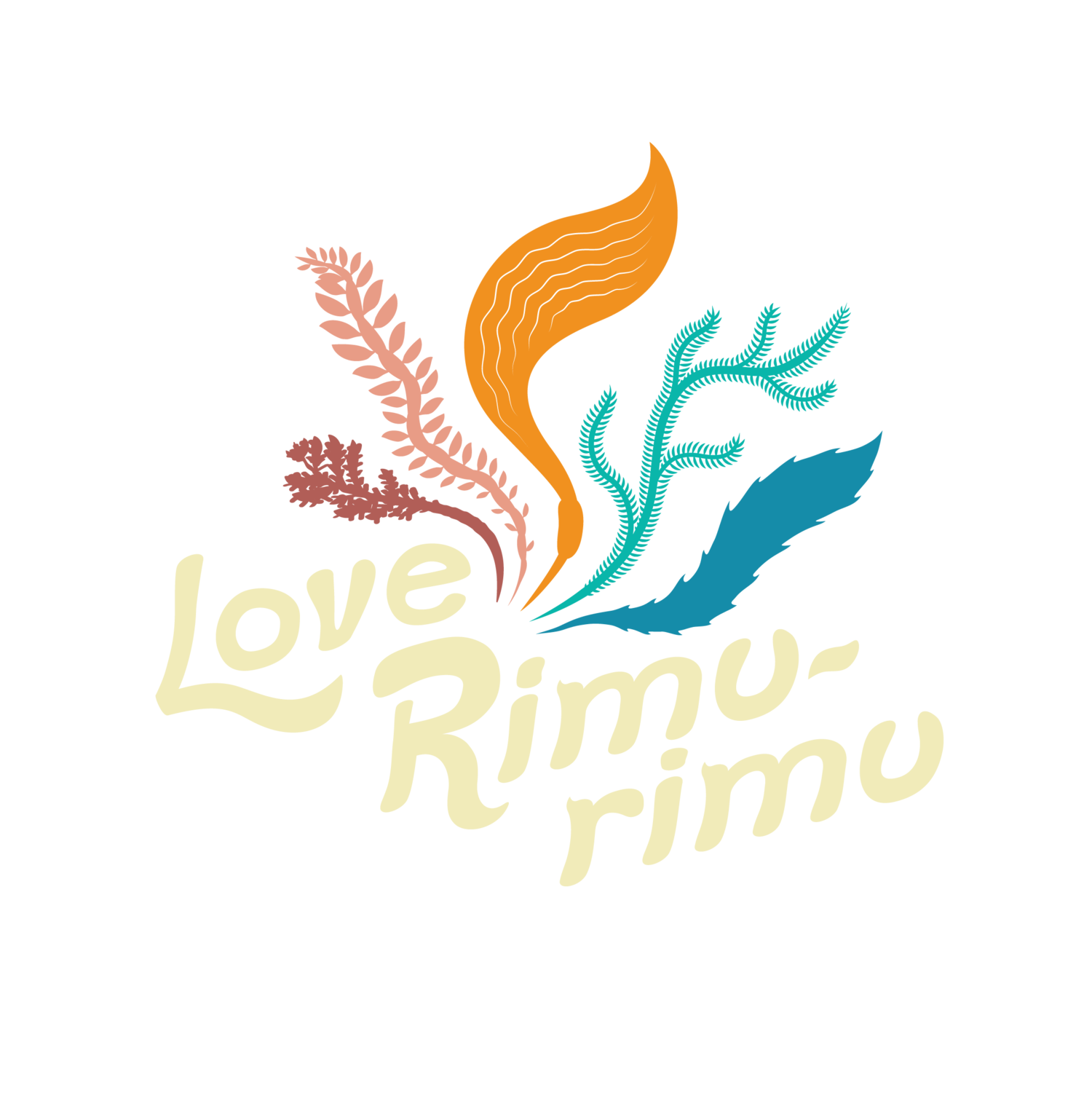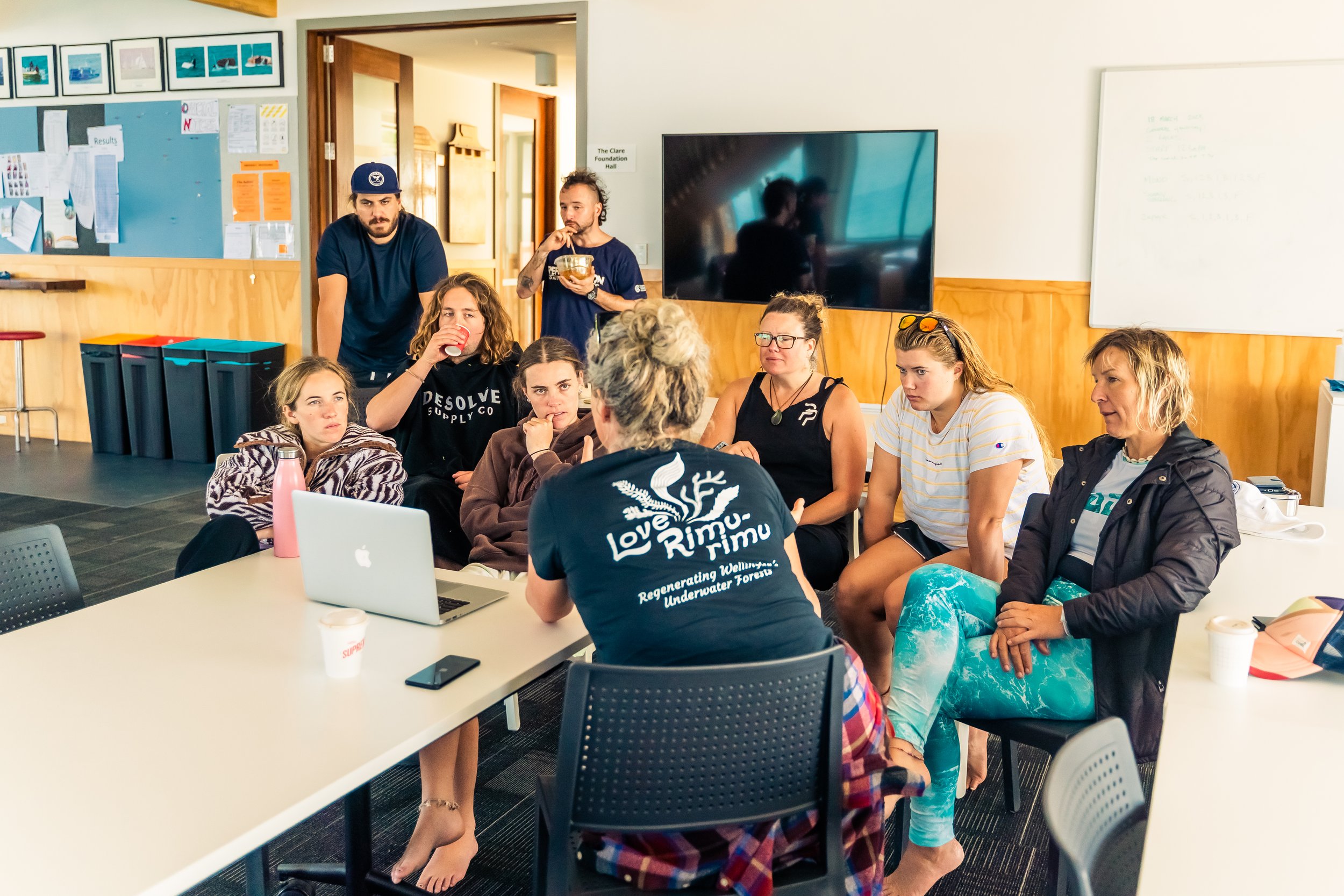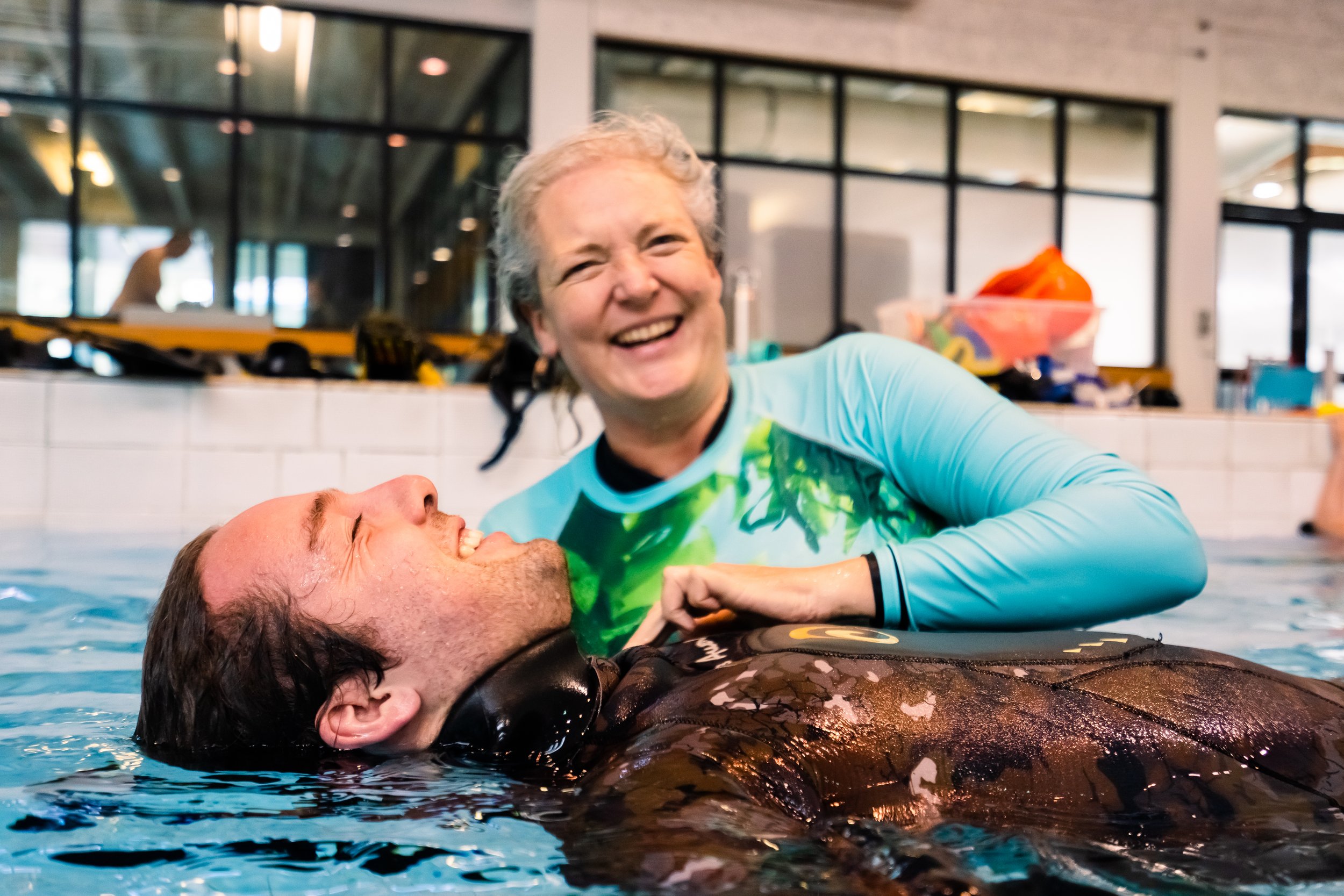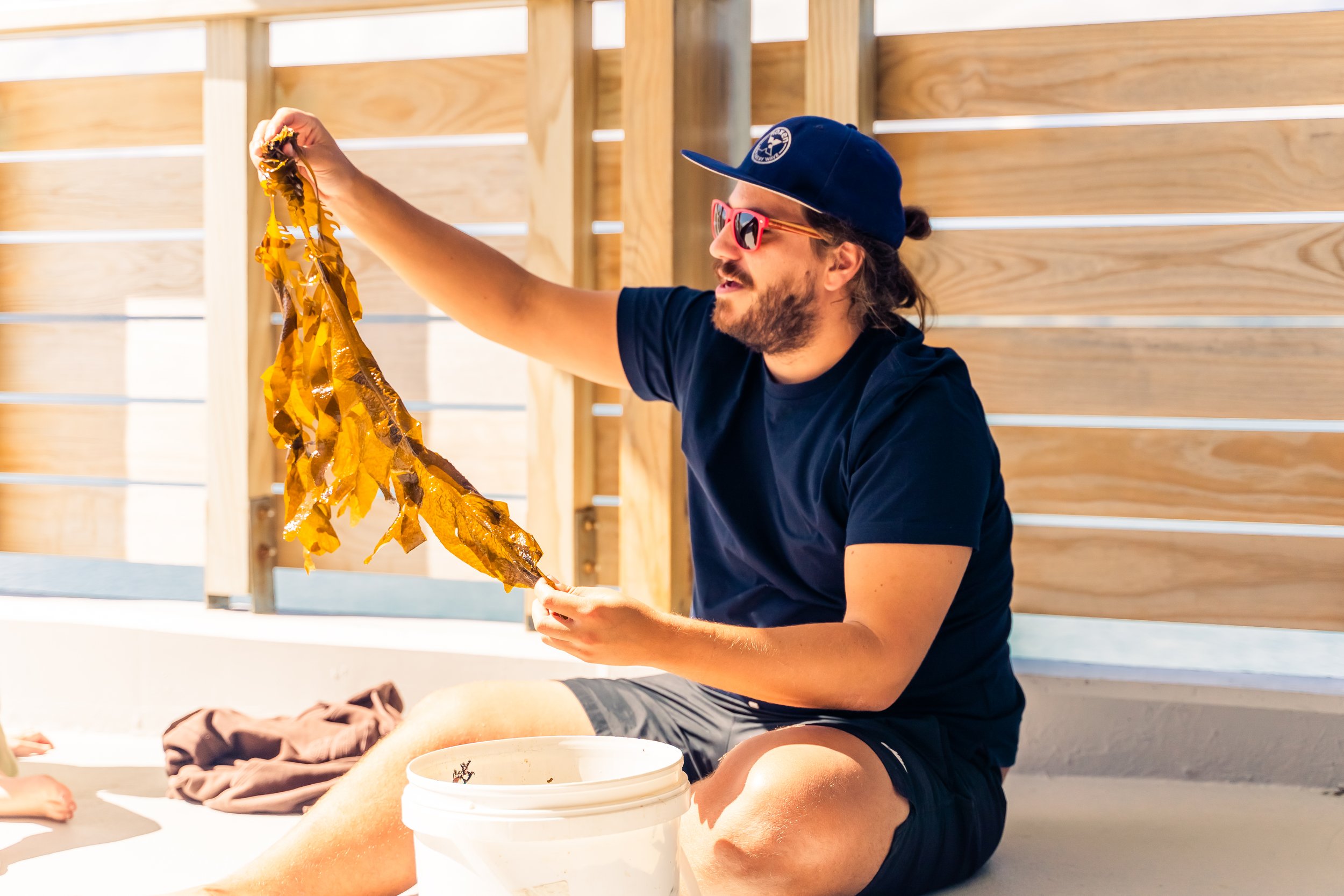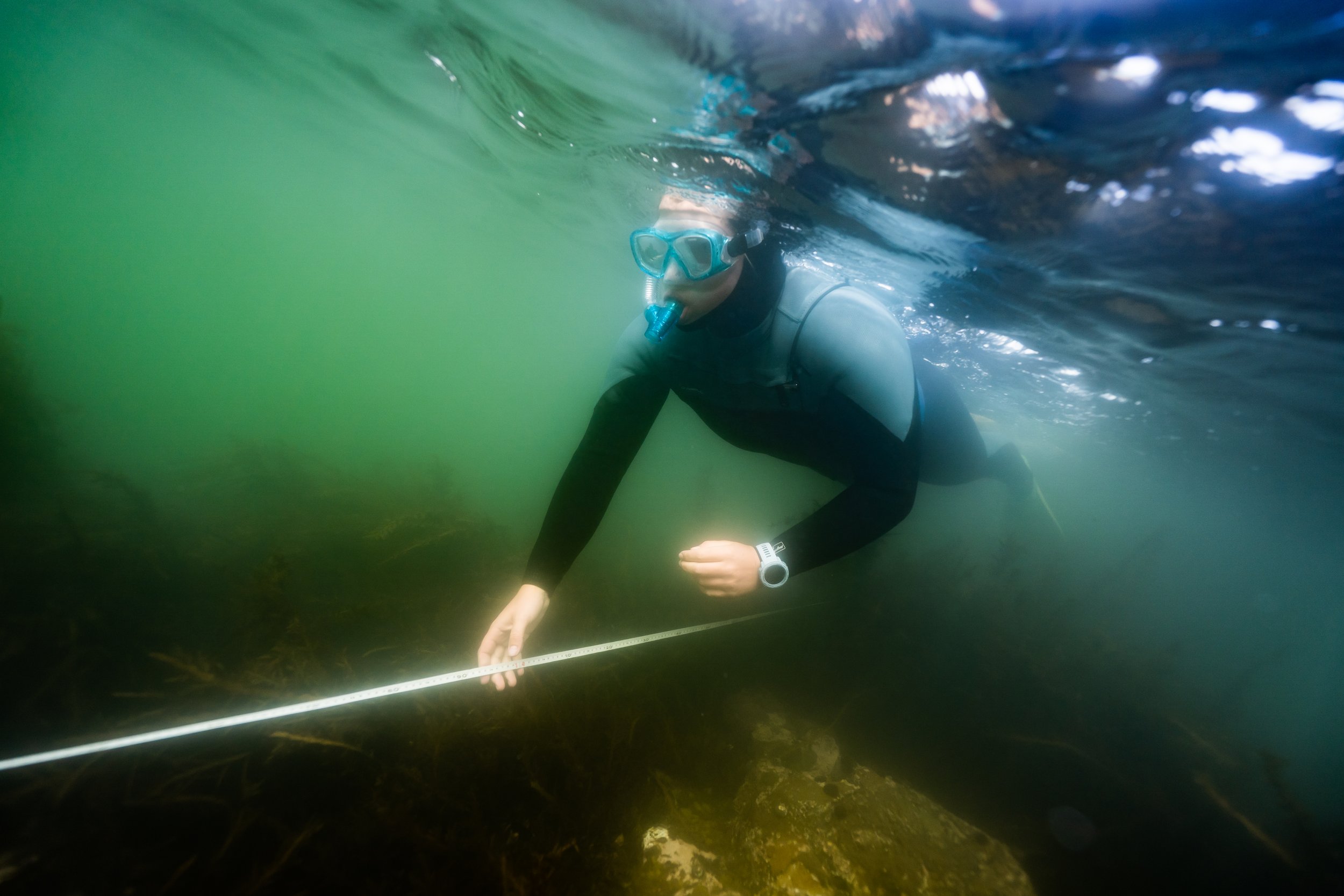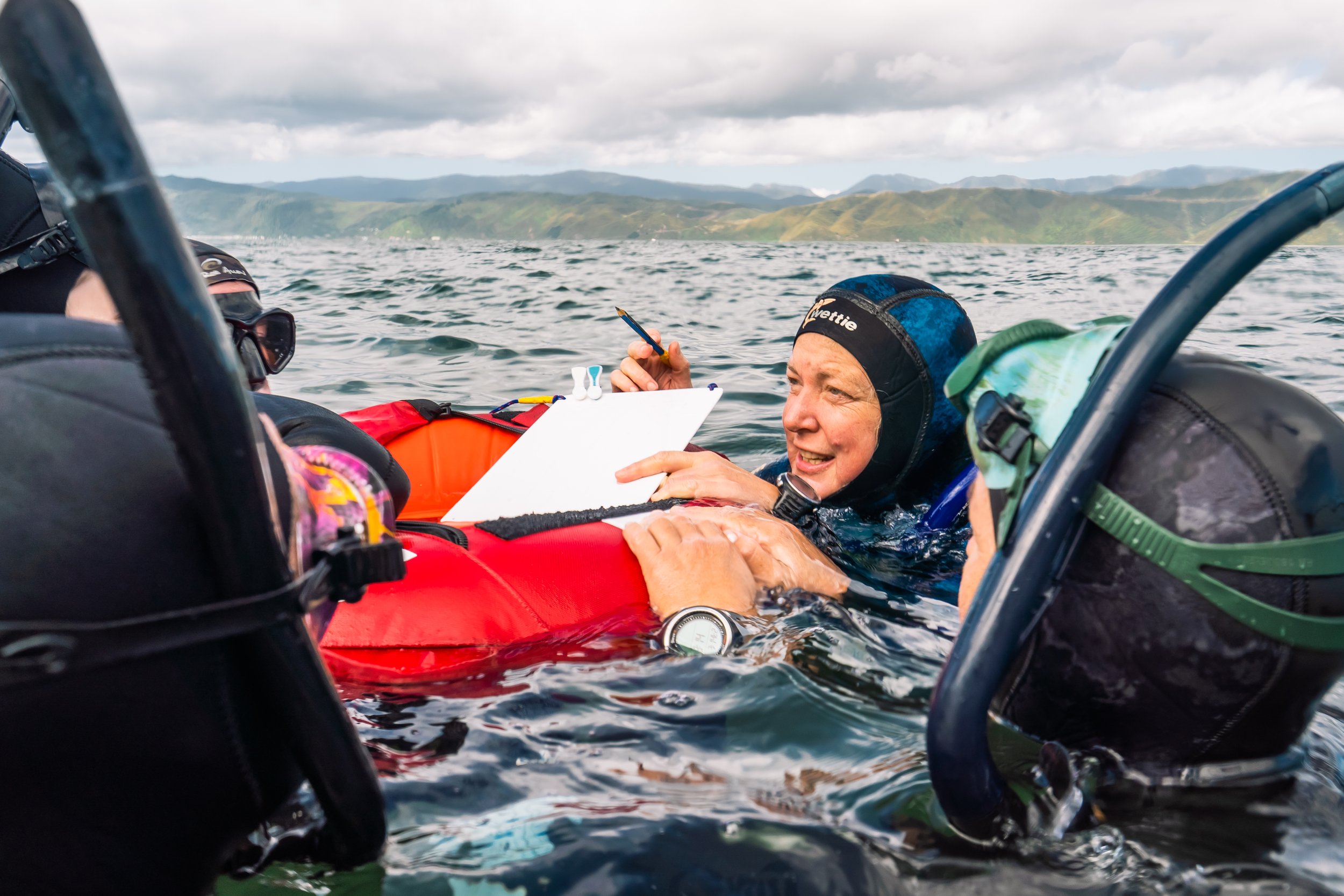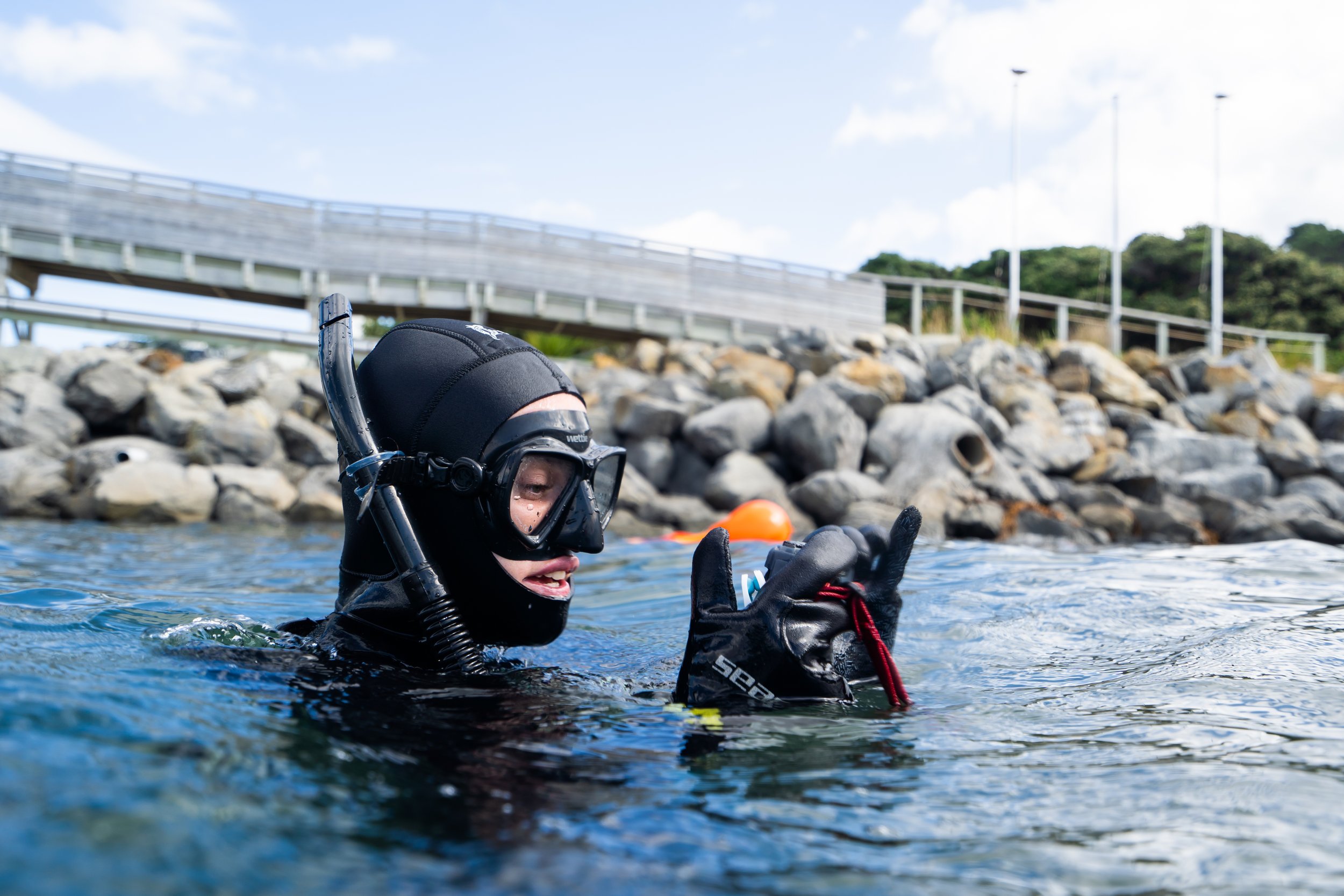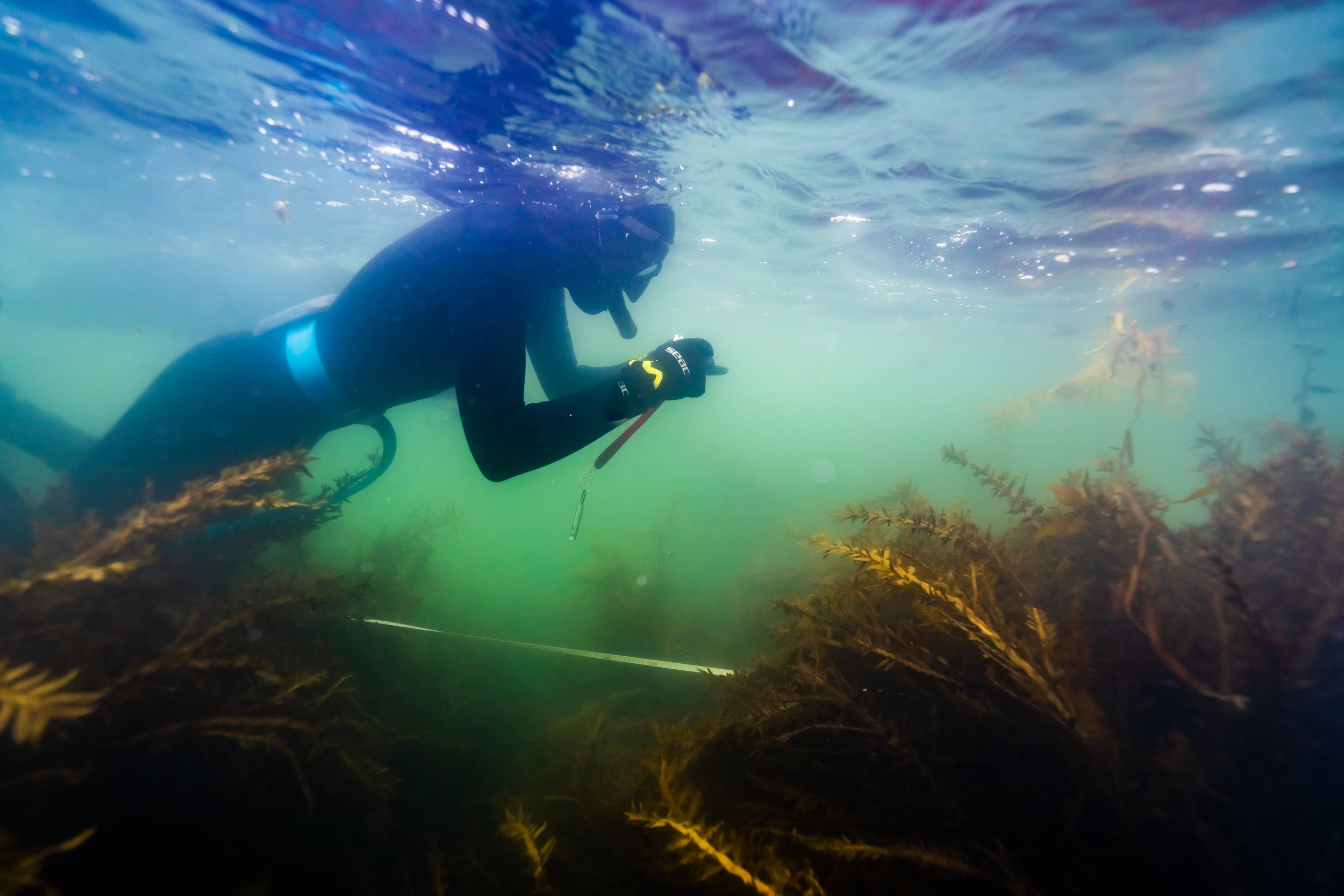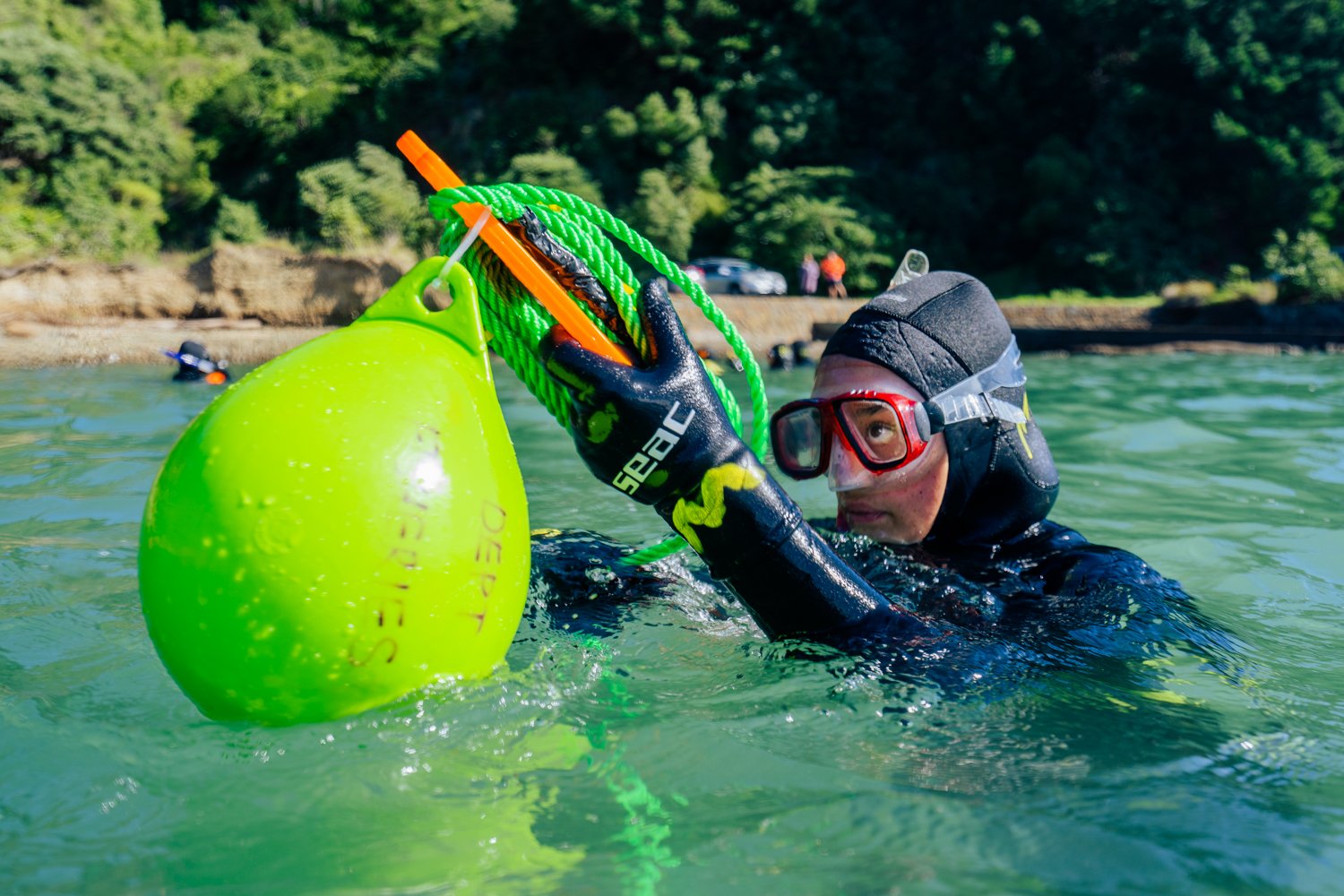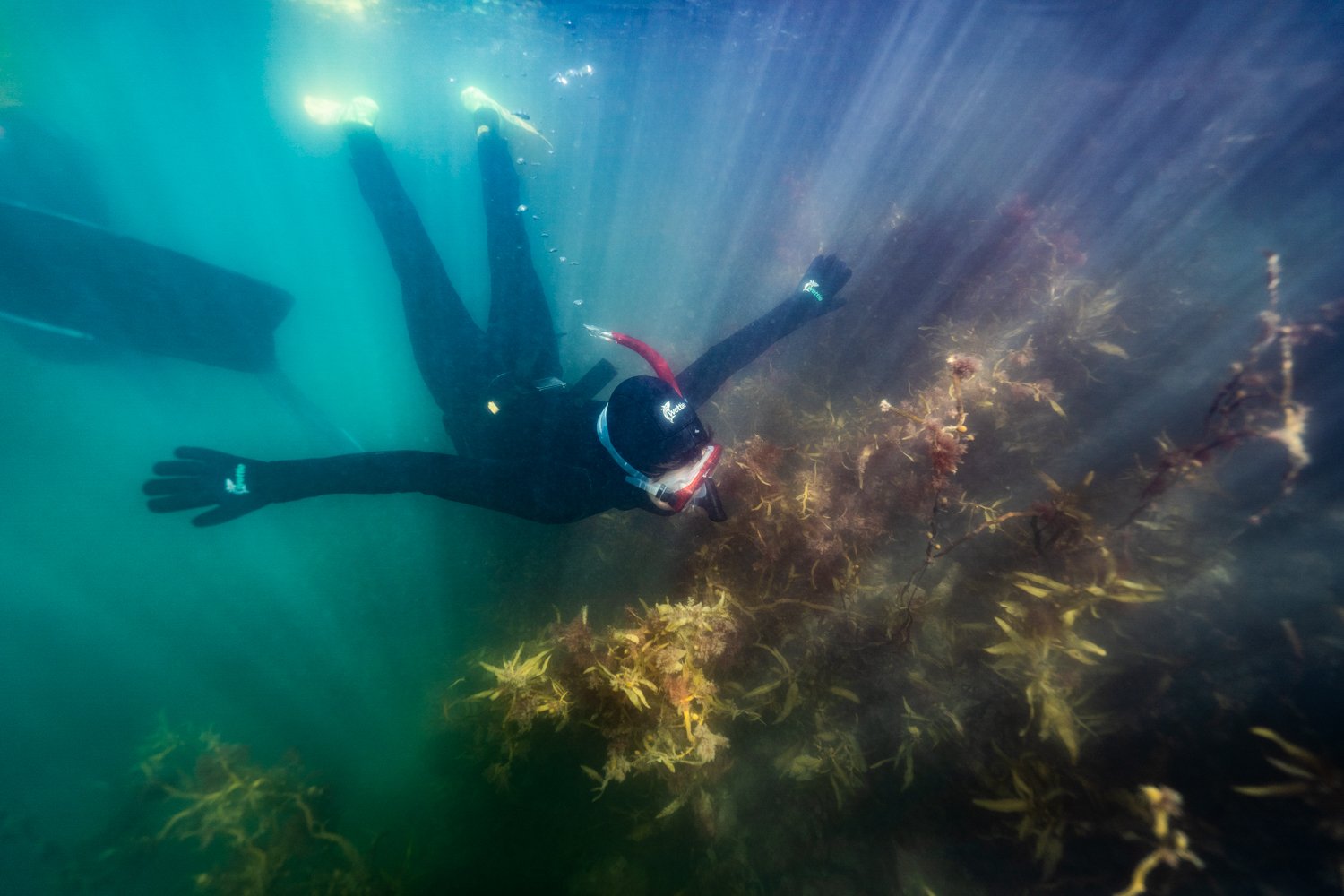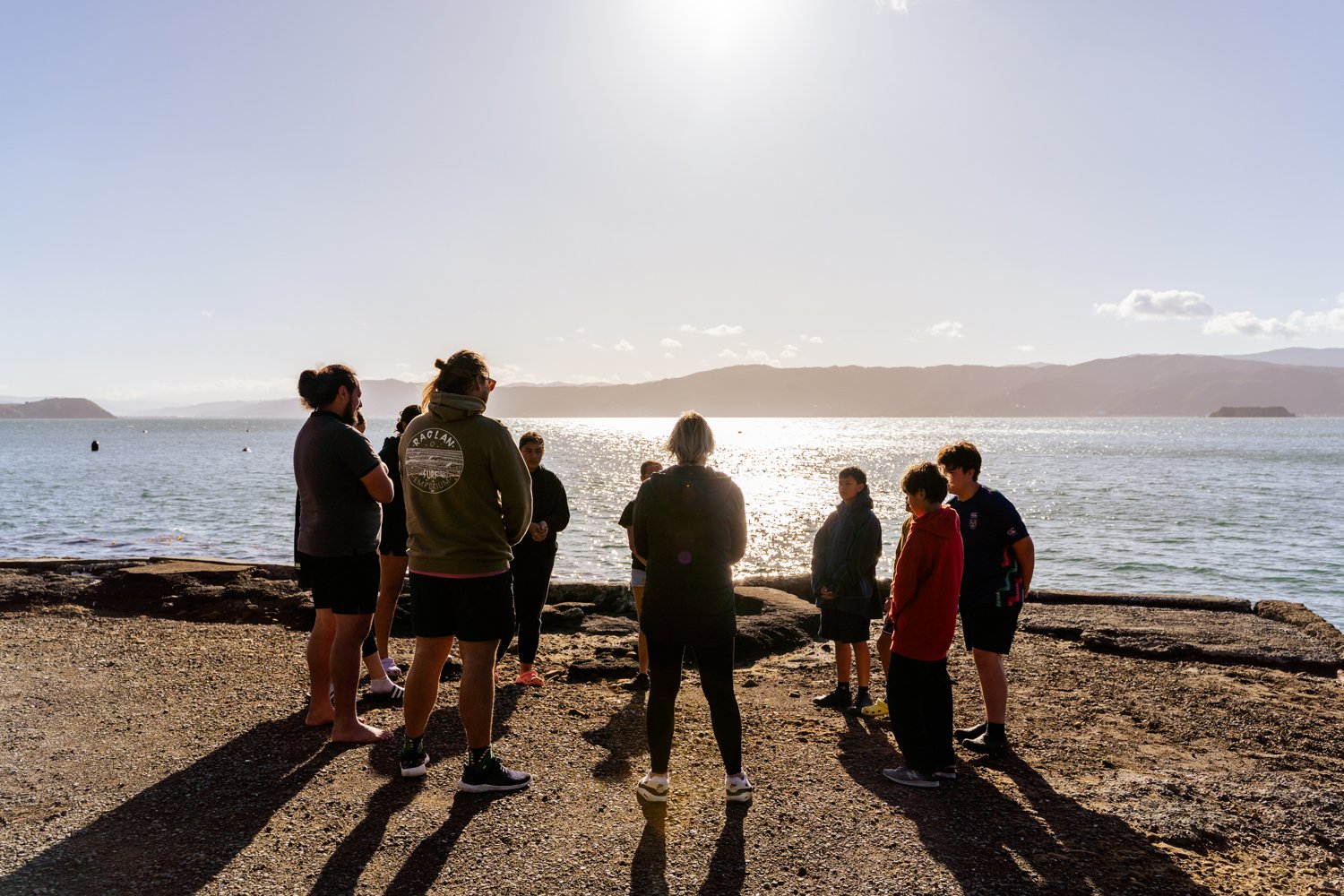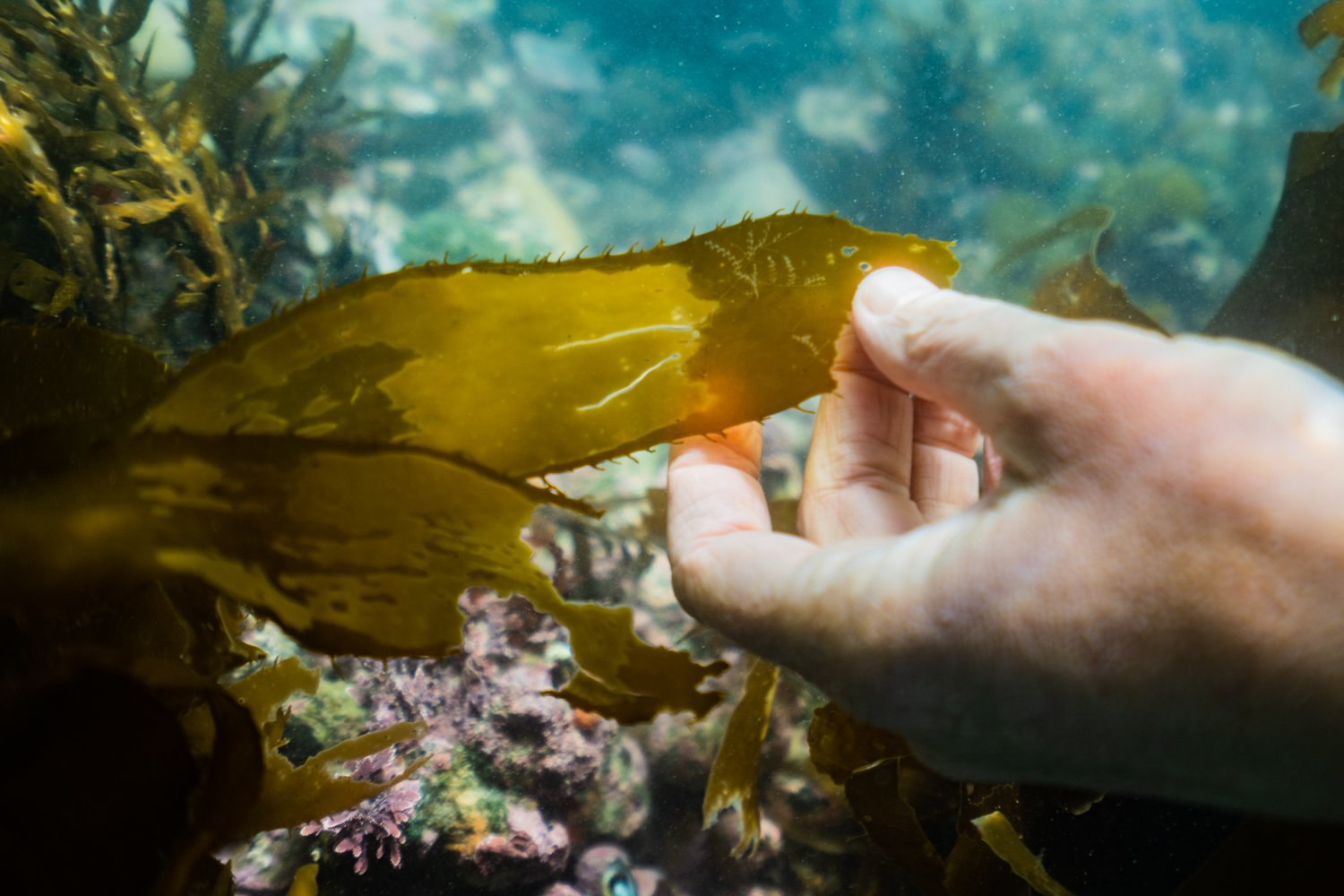Community scientists key to seaweed plant-outs
The Love Rimurimu project enters an exciting phase with the plant out of giant kelp into regeneration sites across Wellington harbour this winter. Keeping a close eye on how the young seaweeds grow and survive is important information to collect, and a group of passionate local volunteers are helping to make this happen.
These keen volunteers jumped on-board the first Love Rimurimu Community Monitoring training programme held in March 2023. The pilot course involved learning all about the seaweeds found in the harbour, building a solid freediving foundation and becoming familiar with in-water monitoring. The crew of seaweed community monitors - now known as the Kelpers - spent the weekend in the pool and ocean honing their freediving skills with Sacha Williamson from Freedive Aotearoa, and getting to grips with the equipment and methodology that will be used during the monitoring work. The weather held out and participants even had some surprise guests… a pod of over a hundred dolphins out on the hunt.
“This community science programme is a great way to upskill Mountains to Sea Wellington's and Love Rimurimu's volunteers to become not only more proficient in water safety and freediving skills but also in scientific data gathering.” says Zoe Studd, the Love Rimurimu project lead. “The programme is still in pilot phase and will need some refining but we are optimistic that between the participants, mana whenua and our science partners we will achieve a robust community science programme with a passionate community behind it.”
It is also a dream of the Love Rimurimu project to offer alternate pathways for young people to get involved in science and environmental mahi so getting students from Te Kura Kaupapa Māori O Ngā Mokopuna involved in the monitoring training was a key part of the pilot.
“This group of rangatahi have been involved with Love Rimurimu for at least 3 years”, says education lead Jorge Jimenez. “They all started from scratch learning the very basics of what seaweeds are, and now are becoming certified freedivers with a scientific speciality. These tauira (students) were the visionaries of returning healthy rimurimu forest in their moana, so moving onto hands-on regeneration and monitoring of these forests is the natural next step for them.Their passion for the moana inspires anyone that listens to their kōrero.”
With their new freediving skills and years of accumulated seaweed knowledge, the students are inspiring to see and well set up to dive into monitoring work with the project.
This first pilot training session has been an incredible learning opportunity for participants and coordinators alike and the general reception has been incredibly positive.
“Being involved with such an amazing kaupapa makes me feel so much more connected, not just to our community, but to our moana and to the planet”, says Octacle founder, long time project supporter and one of our first ‘Kelpers’ Kat Greagor. “Like giving the earth a hug and saying - we can see you’re in trouble and we want to help. It’s a whole new view under there and everyone can, and should, take a look.”
Kat’s words echo the general feelings from many participants. A feeling of connectedness between themselves, the moana, and our community. A sense of enthusiasm and optimism moving forward as we enter the next exciting chapter of the Love Rimurimu restoration project.
If you’d like to get involved in this mahi sign up for our newsletter or send us an email.
